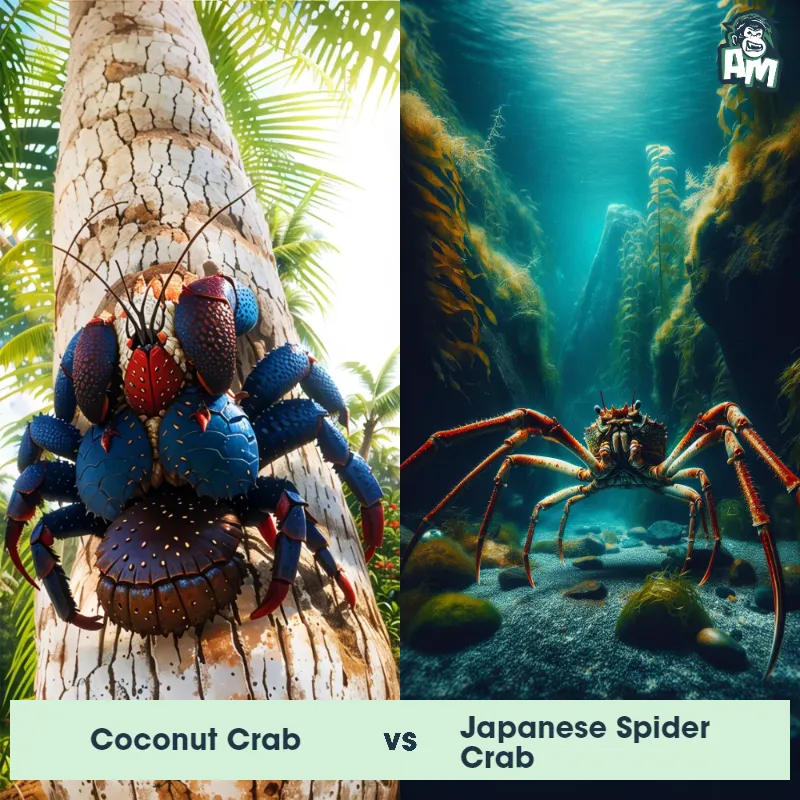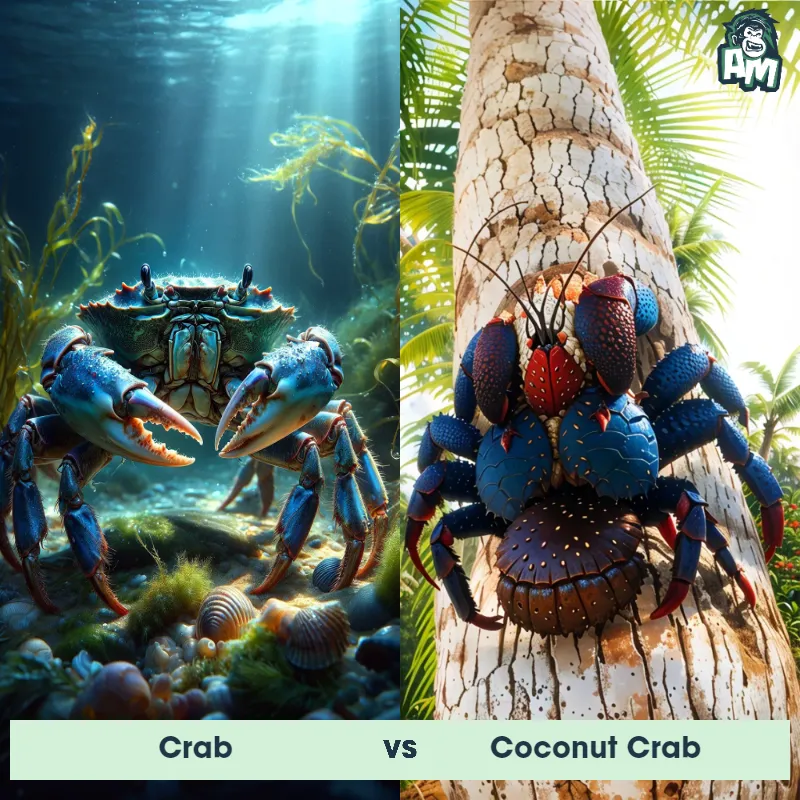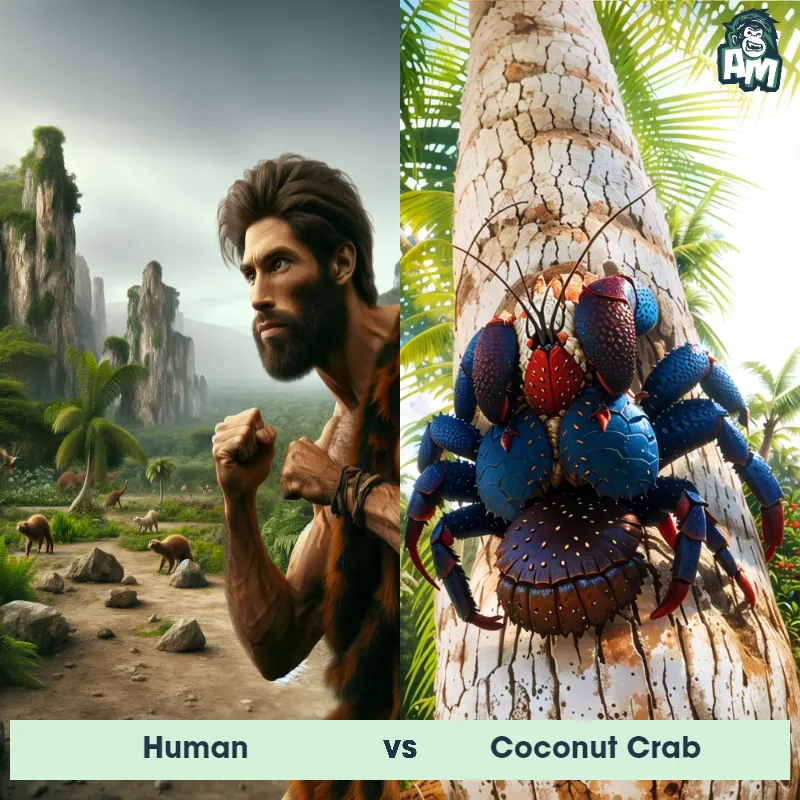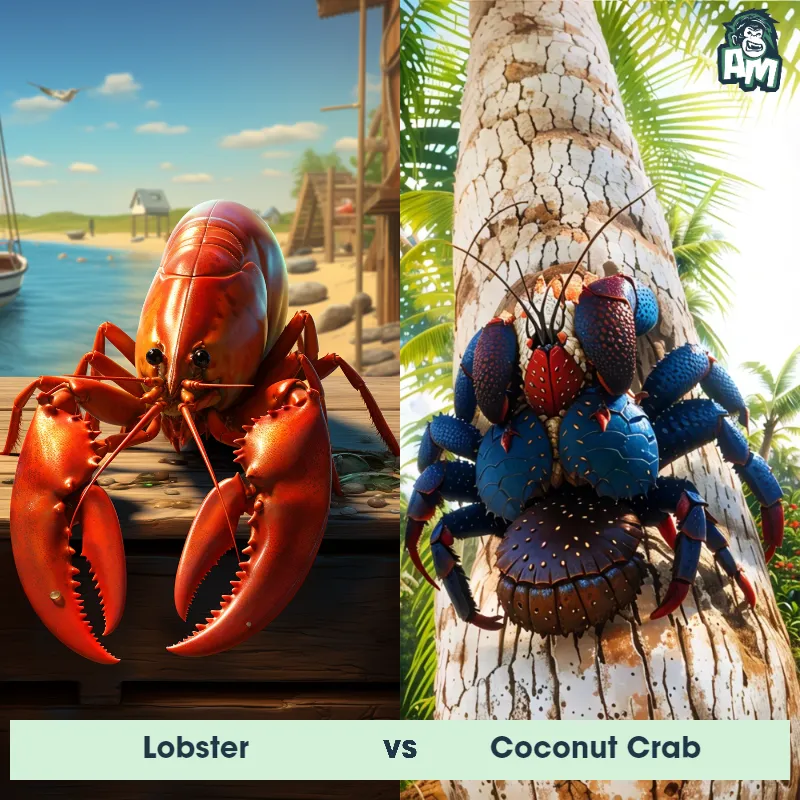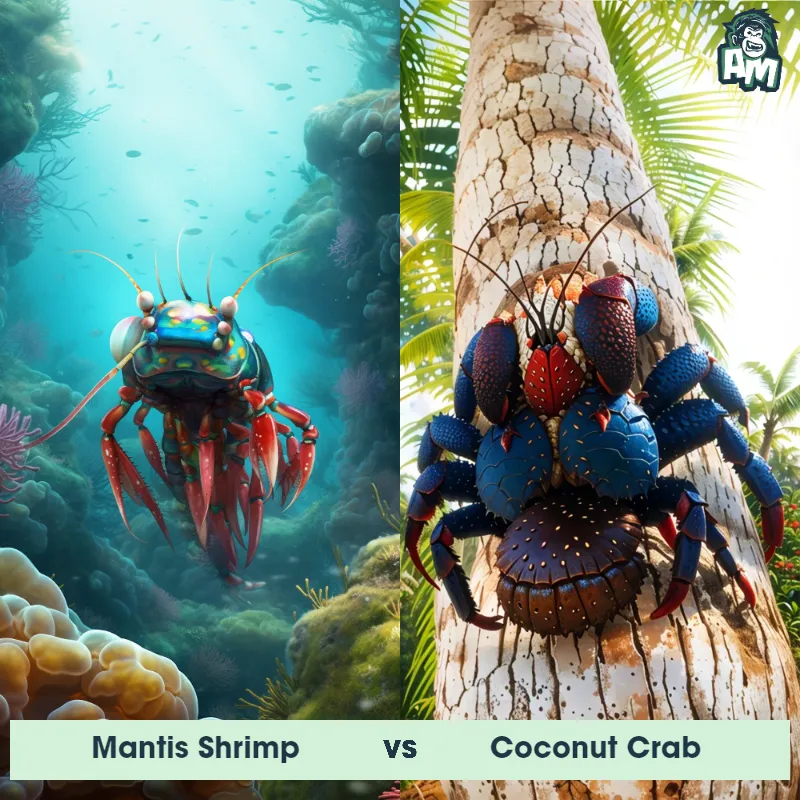The Coconut Crab
The Coconut Crab, also known as Birgus latro, is the largest land-dwelling arthropod in the world. With a leg span of up to one meter and weighing up to four kilograms, this crab possesses a formidable appearance. They have a reddish exoskeleton that helps them blend into their tropical environment, and their powerful pincers can exert a force of up to 4,450 newtons, making them capable of cracking coconuts. These crabs primarily inhabit the Indo-Pacific region and live in burrows near the shoreline, where they retreat to during the day to avoid the extreme heat.
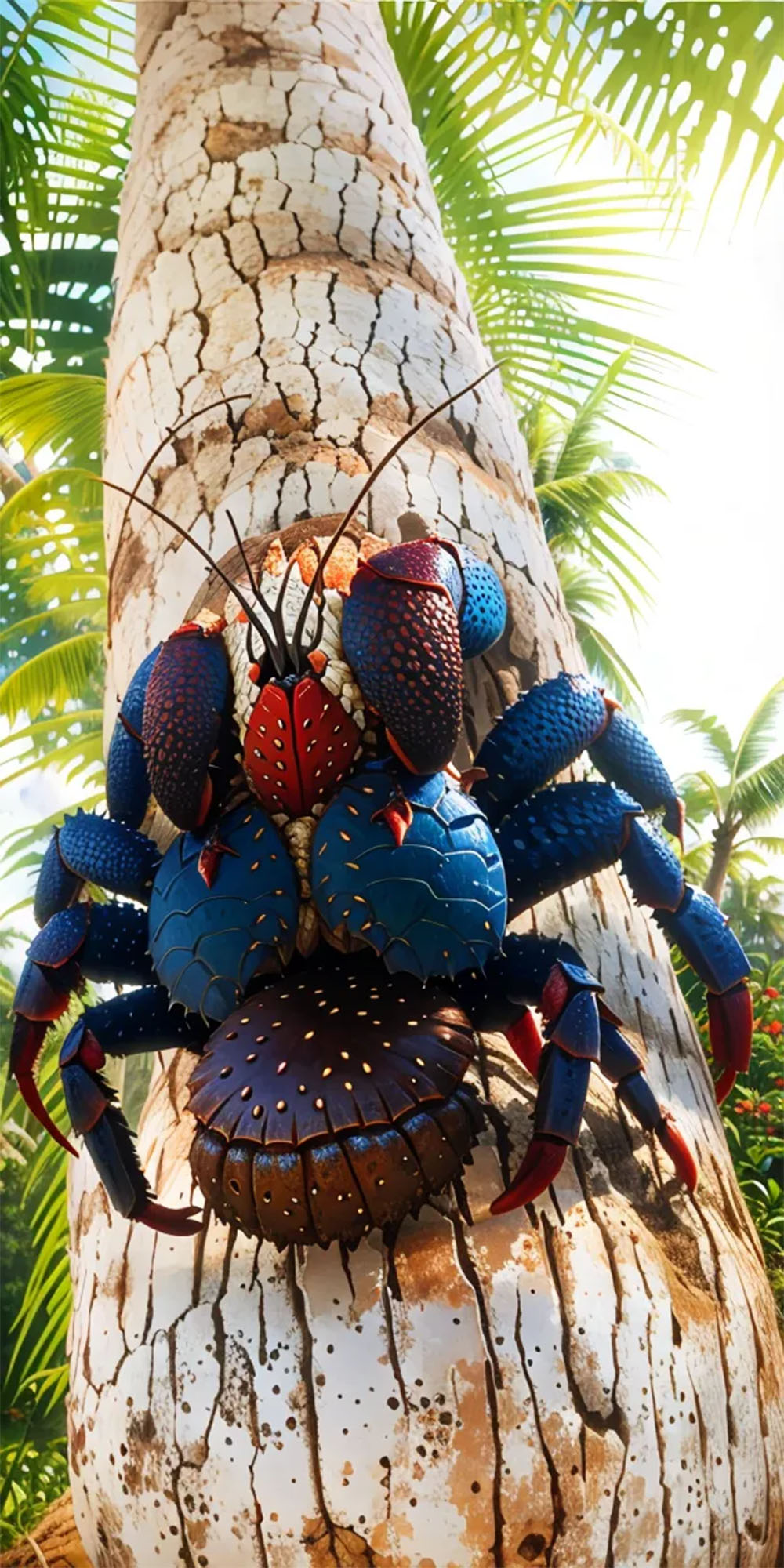
| Coconut Crab | |
|---|---|
| Size | Up to 3 feet (0.9 meters) |
| Weight | Up to 9 pounds (4 kilograms) |
| Speed | 1 mph (1.6 km/h) |
| Key Strength | Strong claws and legs |
| Biggest Weakness | None specified |
| Scientific Name | Birgus latro |
| Family | Coenobitidae |
| Habitat | Coastal regions |
| Geography | Indian and Pacific Oceans |
| Diet | Fruits, coconuts, vegetation |
| Lifespan | 8 years - 40 years |

The Coconut Crab
The Coconut Crab, also known as Birgus latro, is the largest land-dwelling arthropod in the world. With a leg span of up to one meter and weighing up to four kilograms, this crab possesses a formidable appearance. They have a reddish exoskeleton that helps them blend into their tropical environment, and their powerful pincers can exert a force of up to 4,450 newtons, making them capable of cracking coconuts. These crabs primarily inhabit the Indo-Pacific region and live in burrows near the shoreline, where they retreat to during the day to avoid the extreme heat.
Fun Fact: The Coconut Crab is an excellent climber and has been observed climbing tall trees to forage for food, such as fruits, nuts, and carrion, as well as to escape predators.
| Coconut Crab | |
|---|---|
| Size | Up to 3 feet (0.9 meters) |
| Weight | Up to 9 pounds (4 kilograms) |
| Speed | 1 mph (1.6 km/h) |
| Key Strength | Strong claws and legs |
| Biggest Weakness | None specified |
| Scientific Name | Birgus latro |
| Family | Coenobitidae |
| Habitat | Coastal regions |
| Geography | Indian and Pacific Oceans |
| Diet | Fruits, coconuts, vegetation |
| Lifespan | 8 years - 40 years |
Coconut Crab Matchups
We use AI to simulate matchups between the Coconut Crab and other animals. Our simulation considers size, strength, and natural predatory behaviors to determine the most likely outcome.
Coconut Crab: Diet, Predators, Aggression, and Defensive Behaviors
What do Coconut Crabs eat?
Coconut Crabs are omnivorous and have a varied diet. They primarily scavenge for fruits, nuts, seeds, and other plant material. They also feed on carrion, small animals, insects, and other decaying matter they come across in their habitat. Despite their name, they do not exclusively consume coconuts, but they are known to crack open coconuts to access the flesh inside.
Do Coconut Crabs have any predators?
As adults, Coconut Crabs have few natural predators due to their large size and tough exoskeleton. However, young Coconut Crabs are vulnerable to predation by birds, rats, and other small mammals, as well as larger crustaceans. Humans also pose a threat to Coconut Crabs through hunting and habitat destruction.
Are Coconut Crabs aggressive?
Coconut Crabs are generally not considered aggressive towards humans, but they can exhibit territorial behavior towards each other. When threatened or cornered, they may use their powerful claws defensively, as well as emit loud noises as a warning sign.
Do Coconut Crabs fight?
Coconut Crabs are known to engage in aggressive interactions, particularly during mating season or when competing for resources. These interactions can involve physical combat, where they use their powerful claws to defend themselves or establish dominance.
How do Coconut Crabs defend themselves?
Coconut Crabs have several defense mechanisms to protect themselves from predators or threats. Their large size and tough exoskeleton provide physical protection, while their strong claws can be used for both offense and defense. They can also retreat into their burrows or hide in crevices to avoid danger.
What is the biggest weakness of Coconut Crabs in a fight?
Despite their formidable size and strength, Coconut Crabs have a vulnerable spot in their soft underbelly, which is not protected by their hard exoskeleton. Predators or rivals may target this area to inflict damage during a fight, making it a potential weakness for Coconut Crabs in combat situations.
Fun Fact: Given their large size, these crabs have an incredible lifespan, with individuals documented to live up to 60 years in the wild.
Fun Fact: The Coconut Crab has a strong sense of smell and can detect a scent from as far as a kilometer away, making their ability to locate food an impressive feat.



